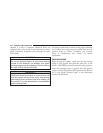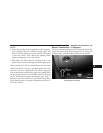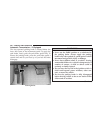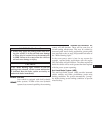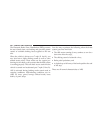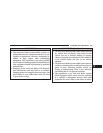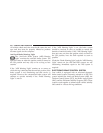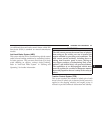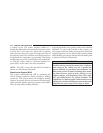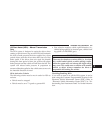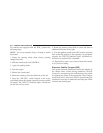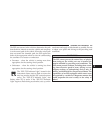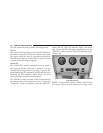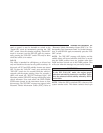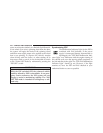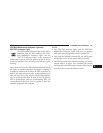
A feature of the TCS system functions similar to a
limited-slip differential and controls the wheel spin across
a driven axle. If one wheel on a driven axle is spinning
faster than the other, the system will apply the brake of
the spinning wheel. This will allow more engine torque to
be applied to the wheel that is not spinning. This feature
remains active even if TCS and ESP are in the “Partial Off”
or “Full Off” modes. Refer to “Electronic Stability Pro-
gram (ESP)” in this section for more information.
NOTE: The LSD is a true LSD and the TCS function is
similar to a limited-slip differential.
Brake Assist System (BAS)
This system complements the ABS by optimizing the
vehicle braking capability during emergency braking
maneuvers. This system detects an emergency braking
situation by sensing the rate and amount of brake appli-
cation and then applies optimum pressure to the brakes.
This can help reduce braking distances.
Applying the brakes very quickly results in the best BAS
assistance. To receive the benefits of this system, you
must apply continuous brake pedal pressure during the
stopping sequence. Do not reduce brake pedal pressure
unless braking is no longer desired. Once the brake pedal
is released, the BAS is deactivated.
WARNING!
The BAS cannot prevent the natural laws of physics
from acting on the vehicle, nor can it increase the
traction afforded by prevailing road conditions. The
BAS cannot prevent accidents, including those result-
ing from excessive speed in turns, driving on very
slippery surfaces, or hydroplaning. Only a safe, atten-
tive, and skillful driver can prevent accidents. The
capabilities of a BAS-equipped vehicle must never be
exploited in a reckless or dangerous manner that could
jeopardize the user’s safety or the safety of others.
272 STARTING AND OPERATING



